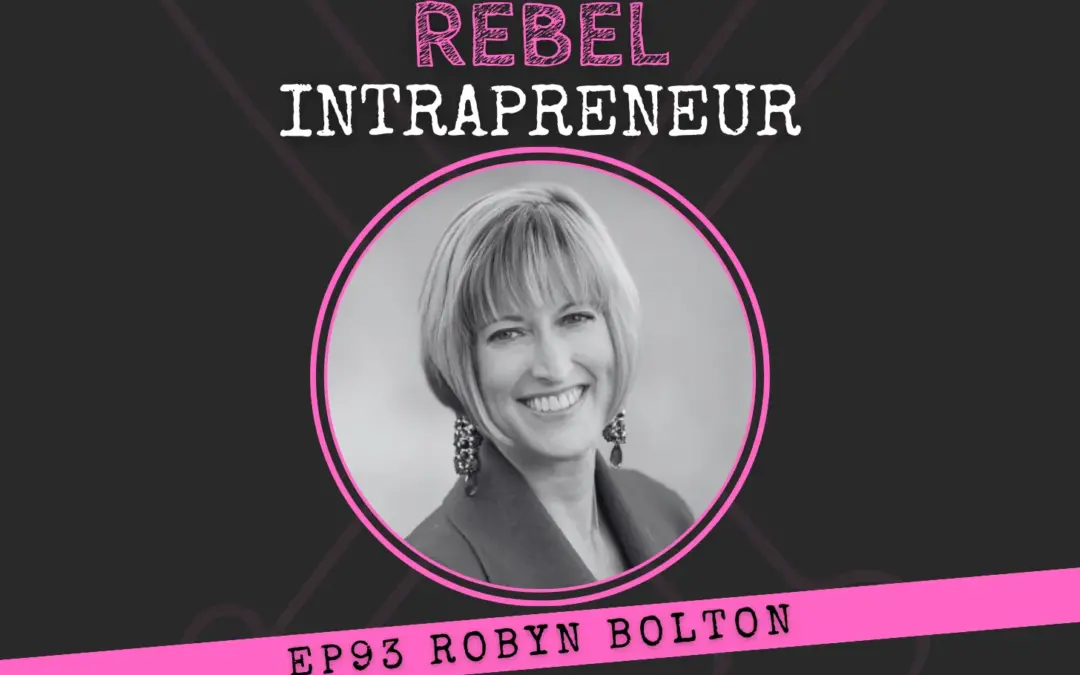
by Robyn Bolton | Apr 2, 2024 | Innovation, Leadership, Strategy
You’ve heard the adage that “culture eats strategy for breakfast.” Well, AI is the fruit bowl on the side of your Denny’s Grand Slam Strategy, and culture is eating that, too.
1 tool + 2 companies = 2 strategies
On an Innovation Leader call about AI, two people from two different companies shared stories about what happened when an AI notetaking tool unexpectedly joined a call and started taking notes. In both stories, everyone on the calls was surprised, uncomfortable, and a little bit angry that even some of the conversation was recorded and transcribed (understandable because both calls were about highly sensitive topics).
The storyteller from Company A shared that the senior executive on the call was so irate that, after the call, he contacted people in Legal, IT, and Risk Management. By the end of the day, all AI tools were shut down, and an extensive “ask permission or face termination” policy was issued.
Company B’s story ended differently. Everyone on the call, including senior executives and government officials, was surprised, but instead of demanding that the tool be turned off, they asked why it was necessary. After a quick discussion about whether the tool was necessary, when it would be used, and how to ensure the accuracy of the transcript, everyone agreed to keep the note-taker running. After the call, the senior executive asked everyone using an AI note-taker on a call to ask attendees’ permission before turning it on.
Why such a difference between the approaches of two companies of relatively the same size, operating in the same industry, using the same type of tool in a similar situation?
1 tool + 2 CULTURES = 2 strategies
Neither storyteller dove into details or described their companies’ cultures, but from other comments and details, I’m comfortable saying that the culture at Company A is quite different from the one at Company B. It is this difference, more than anything else, that drove Company A’s draconian response compared to Company B’s more forgiving and guiding one.
This is both good and bad news for you as an innovation leader.
It’s good news because it means that you don’t have to pour hours, days, or even weeks of your life into finding, testing, and evaluating an ever-growing universe of AI tools to feel confident that you found the right one.
It’s bad news because even if you do develop the perfect AI strategy, it won’t matter if you’re in a culture that isn’t open to exploration, learning, and even a tiny amount of risk-taking.
Curious whether you’re facing more good news than bad news? Start here.
8 culture = 8+ strategies
In 2018, Boris Groysberg, a professor at Harvard Business School, and his colleagues published “The Leader’s Guide to Corporate Culture,” a meta-study of “more than 100 of the most commonly used social and behavior models [and] identified eight styles that distinguish a culture and can be measured. I’m a big fan of the model, having used it with clients and taught it to hundreds of executives, and I see it actively defining and driving companies’ AI strategies*.
Results (89% of companies): Achievement and winning
- AI strategy: Be first and be right. Experimentation is happening on an individual or team level in an effort to gain an advantage over competitors and peers.
Caring (63%): Relationships and mutual trust
- AI strategy: A slow, cautious, and collaborative approach to exploring and testing AI so as to avoid ruffling feathers
Order (15%): Respect, structure, and shared norms
- AI strategy: Given the “ask permission, not forgiveness” nature of the culture, AI exploration and strategy are centralized in a single function, and everyone waits on the verdict
Purpose (9%): Idealism and altruism
- AI strategy: Torn between the undeniable productivity benefits AI offers and the myriad ethical and sustainability issues involved, strategies are more about monitoring than acting.
Safety (8%): Planning, caution, and preparedness
- AI strategy: Like Order, this culture takes a centralized approach. Unlike Order, it hopes that if it closes its eyes, all of this will just go away.
Learning (7%): Exploration, expansiveness, creativity
- AI strategy: Slightly more deliberate and guided than Purpose cultures, this culture encourages thoughtful and intentional experimentation to inform its overall strategy
Authority (4%): Strength, decisiveness, and boldness
- AI strategy: If the AI strategies from Results and Order had a baby, it would be Authority’s AI strategy – centralized control with a single-minded mission to win quickly
Enjoyment (2%): Fun and excitement
- AI strategy: It’s a glorious free-for-all with everyone doing what they want. Strategies and guidelines will be set if and when needed.
What do you think?
Based on the story above, what culture best describes Company A? Company B?
What culture best describes your team or company? What about your AI strategy?
*Disclaimer. Culture is an “elusive lever” because it is based on assumptions, mindsets, social patterns, and unconscious actions. As a result, the eight cultures aren’t MECE (mutually exclusive, collectively exhaustive), and multiple cultures often exist in a single team, function, and company. Bottom line, the eight cultures are a tool, not a law (and I glossed over a lot of stuff from the report)

by Robyn Bolton | Mar 19, 2024 | Innovation
Growth is the lifeblood of any organization, and the quest for growth opportunities is not just a strategic imperative. It is a fundamental necessity because the ability to identify and capitalize on opportunities is a game-changer for companies wanting to achieve sustainable success and stay ahead of the competition.
The challenge, however, is that not all opportunities are the same – some are head-smackingly obvious, while others are like trying to nail down JELL-O. Yet companies take a “one size fits all” approach to finding, developing, and capitalizing on them.
SEARCH when need to transform
What do you do when you need information but don’t know precisely what you need and certainly don’t know where to find it? You Google it or, in less-branded terms, you search for it.
When searching for growth opportunities, you’re looking for something but don’t know exactly what you need or where you’ll find it. Finding opportunities requires you to go beyond traditional market analysis and adopt a learner’s mindset to see ways to disrupt the status quo, challenge existing paradigms, and create new value propositions for your customers.
Searching is a creative process that entails investing in R&D, fostering a culture of intrapreneurship, and experimenting with new technologies. It requires a culture of creativity, experimentation, and agility to adapt to changing market dynamics. You have to be willing to be wrong on your way to being right, to move slowly so you can act quickly, and to throw out the timeline to harness the game-changing opportunity.
SEEK when you need to innovate
What do you do when you know what you need and generally where to find it? You seek it out – you go to where you think it will be, and, on the off-chance it’s not there, you pivot to Option B.
When you’re seeking growth opportunities, you have a target in mind but are not 100% sure how to hit it. Maybe you know you want to enter a new geography, but you need to figure out how to do it successfully and avoid the mistakes of previous entrants. Maybe it’s a new industry or category, but you must understand if and how to do it without disrupting your existing business model.
Seeking is both creative and analytical. You look for data and market intelligence, interview experts and individuals, analyze industry trends and explore untapped segments. It also requires you to stay open to surprises and new possibilities and take calculated risks to capitalize on emerging trends or consumer preferences. Like searching, it requires patience. Unlike searching, it respects a deadline.
STALK when you need to improve
Just like a lioness stalking a wildebeest, you do this when you see an opportunity and know exactly how to capture it. Yes, there will be zigs and zags along the way, and an unexpected competitor may pop up. But this is who you are and what you do.
When stalking opportunities, you bring the full value and power of your experience, expertise, resources, and capabilities to bear on an opportunity. This may happen when you’re operating and improving your core business. It may also occur after you’ve searched (and found) an opportunity, sought (and decided on) a strategy, and now you have the confidence to launch and scale.
Do Your Approaches Align with Your Goals?
Most companies say that they want to transform. Still, very few have the patience or intestinal fortitude to search because there is no Google for Transformation that produces the exact plan you need to transform successfully.
Companies also tend to stalk when they want to innovate, leaving opportunities to change the game and build sustainable competitive advantage on the sideline because they’re too uncertain or take too long.
Growth requires all three approaches – search, seek, and stalk – but only happens when your chosen approach aligns with your goals.

by Robyn Bolton | Mar 11, 2024 | Innovation, Leadership
In 2014, rumors started to circulate that Apple was developing a self-driving autonomous car to compete with Tesla. At the end of February 2024, rumors circulated that Apple was shutting down “Project Titan,” its car program. According to multiple media outlets, the only logical conclusion from the project’s death is that this decision signals the beginning of the end of Apple.
As much as I enjoy hyperbole and unnecessary drama, the truth is far more mundane.
The decision was just another day in the life of an innovation.
As always, there is a silver lining to this car-shaped cloud: the lessons we can learn from Apple’s efforts.
Lesson 1: Innovation isn’t all rainbows and unicorns
People think innovation is fun. It is. It is also gut-wrenching, frustrating, and infuriating. Doing something new requires taking risks, which is uncomfortable for most people. Even more challenging is that, more often than not, when you take a risk, you “fail.” (if you learned something, you didn’t fail, but that’s another article).
What you can do: Focus on the good stuff – moments of discovery, adventures when experimenting, signs that you’re making life better for others – but don’t forget that you’re defying the odds.
Lesson 2: More does not mean success
It’s been reported that Apple spent over ten billion dollars on Project Titan and that over 2000 people were working on it before it was canceled. With a market cap of over two trillion dollars, a billion dollars a year isn’t even a rounding error. But it’s still an eye-popping number, which makes Apple’s decision to cut its losses downright courageous.
What you can do: Be on guard for the sunk-cost fallacy. It’s easy to believe that you’ll eventually succeed if you keep working and pouring resources into a project. That’s not true, as Apple experienced. And in the rare cases when it is, executives are often left wondering if the success was worth the cost.
Lesson 3: Pivot based on data, not opinions
At least four different executives led Project Titan during its decade in development, and each leader brought their own vision for what the Apple Car should be. First, it was an electric vehicle with driver assistance that would compete with Tesla. Next, it was a self-driving car to compete with Google’s WayMo. Then, plans for fully autonomous driving were canceled. Finally, the team returned to its original target of matching Tesla’s Level 2 automation.
Changes in project objectives, strategies, and execution plans are necessary for innovation, so there’s nothing obviously wrong with these pivots. But the fact that they tended to happen when a new leader was appointed (and that Jony Ive caused an 18-month hiring freeze simply by expressing “displeasure”) makes me question how data-based these pivots actually were
What you can do: Be willing to change but have a high standard for what is required to cause a change. Data, even qualitative and anecdotal data, should be seriously considered. The opinion of a single executive, not so much.
Lesson 4: Dream big, build small
Apple certainly dreamed big with its aspirations to build a fully semi-autonomous vehicle and it poured billions into developing and testing the sensors, batteries, and partnership required to make it a reality. But it was never all-or-nothing in its pursuit of the automotive industry. Apple introduced CarPlay the same year it kicked off Project Titan, and it continues to offer regular updates to the system. Car Key was announced in 2020 and is now offered by BMW, Genesis, Hyundai, and Kia.
What you can do: Take a portfolio approach towards your overall innovation portfolio (Apple kept working on the iPhone, iPad, Apple Watch, and Vision Pro) and within each project. It’s not unusual that a part of the project turns out to be more valuable than the whole project.
Lesson 5: ___________________________
Yes, that is a fill-in-the-blank because I want to hear from you. What lesson are you taking away from Project Titan’s demise, and how will it make you a better innovator?

by Robyn Bolton | Mar 5, 2024 | Customer Centricity, Tips, Tricks, & Tools
AI is NOT a substitute for person-to-person discovery conversations or Jobs to be Done interviews.
But it is a freakin’ fantastic place to start…if you do the work before you start.
Get smart about what’s possible
When ChatGPT debuted, I had a lot of fun playing with it, but never once worried that it would replace qualitative research. Deep insights, social and emotional Jobs to be Done, and game-changing surprises only ever emerge through personal conversation. No matter how good the Large Language Model (LLM) is, it can’t tell you how feelings, aspirations, and motivations drive their decisions.
Then I watched JTBD Untangled’s video with Evan Shore, WalMart’s Senior Director of Product for Health & Wellness, sharing the tests, prompts, and results his team used to compare insights from AI and traditional research approaches.
In a few hours, he generated 80% of the insights that took nine months to gather using traditional methods.
Get clear about what you want and need.
Before getting sucked into the latest shiny AI tools, get clear about what you expect the tool to do for you. For example:
- Provide a starting point for research: I used the free version of ChatGPT to build JTBD Canvas 2.0 for four distinct consumer personas. The results weren’t great, but they provided a helpful starting point. I also like Perplexity because even the free version links to sources.
- Conduct qualitative research for me: I haven’t used it yet, but a trusted colleague recommended Outset.ai, a service that promises to get to the Why behind the What because of its ability to “conduct and synthesize video, audio, and text conversations.”
- Synthesize my research and identify insights: An AI platform built explicitly for Jobs to be Done Research? Yes, please! That’s precisely what JobLens claims to be, and while I haven’t used it in a live research project, I’ve been impressed by the results of my experiments. For non-JTBD research, Otter.ai is the original and still my favorite tool for recording, live transcription, and AI-generated summaries and key takeaways.
- Visualize insights: Mural, Miro, and FigJam are the most widely known and used collaborative whiteboards, all offering hundreds of pre-formatted templates for personas, journey maps, and other consumer research templates. Another colleague recently sang the praises of theydo, an AI tool designed specifically for customer journey mapping.
Practice your prompts
“Garbage in. Garbage out.” Has never been truer than with AI. Your prompts determine the accuracy and richness of the insights you’ll get, so don’t wait until you’ve started researching to hone them. If you want to start from scratch, you can learn how to write super-effective prompts here and here. If you’d rather build on someone else’s work, Brian at JobsLens has great prompt resources.
Spend time testing and refining your prompts by using a previous project as a starting point. Because you know what the output should be (or at least the output you got), you can keep refining until you get a prompt that returns what you expect. It can take hours, days, or even weeks to craft effective prompts, but once you have them, you can re-use them for future projects.
Defend your budget
Using AI for customer research will save you time and money, but it is not free. It’s also not just the cost of the subscription or license for your chosen tool(s).
Remember the 80% of insights that AI surfaced in the JTBD Untangled video? The other 20% of insights came solely from in-person conversations but comprised almost 100% of the insights that inspired innovative products and services.
AI can only tell you what everyone already knows. You need to discover what no one knows, but everyone feels. That still takes time, money, and the ability to connect with humans.
Run small experiments before making big promises
People react to change differently. Some will love the idea of using AI for customer research, while others will resist with. Everyone, however, will pounce on any evidence that they’re right. So be prepared. Take advantage of free trials to play with tools. Test tools on friends, family, and colleagues. Then underpromise and overdeliver.
AI is a starting point. It is not the ending point.
I’m curious, have you tried using AI for customer research? What tools have you tried? Which ones do you recommend?

by Robyn Bolton | Mar 3, 2024 | Podcasts




